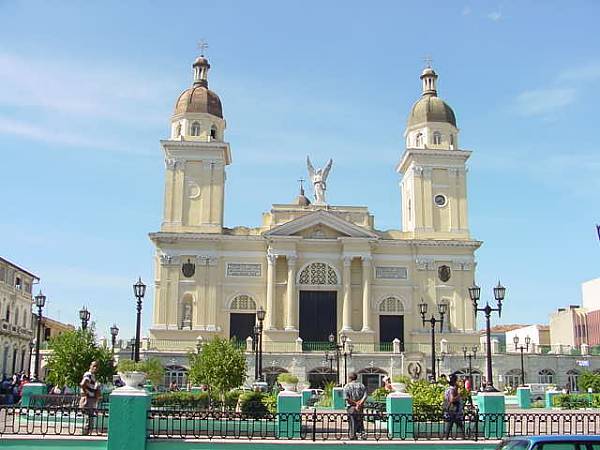4.1 Religious music in Cuba in the 16th century.

Foundation of the Villa de Santiago de Cuba:
Santiago de Cuba is one of Cuba’s most attractive cities. Founded in 1515, it was one of the first seven towns in our country. It was Cuba’s first capital until 1556 due to its exceptional geographical location. The first black slaves were brought to Cuba through the Bay of Santiago, and with them an essential component of Cuban nationality. It became an entry point for our colonizers and a platform for the occupation of other lands. It was from this city that Hernán Cortés set out to conquer Mexico. Dozens of French emigrants arrived here after Toussaint Louverture’s Haitian Revolution in 1791, bringing their culture with them and introducing coffee to Cuba. Santiago de Cuba is the quintessential cradle of almost all of our musical genres, in a country where music is its soul and roots.
Santiago de Cuba Cathedral. First Music Chapel:
In the 16th century, musicians arrived in the town of Santiago de Cuba, leaving traces in their wake, despite continuing on to other places. By mid-century, the town already had its cathedral and an organ played by the first notable Cuban musician of the time: Miguel Velázquez. In 1544, he assumed the position of canon of the cathedral and, at the same time, passed on his religious and musical knowledge to the region’s population.
In Cuba, the only cathedral during the 16th and 17th centuries was Santiago Cathedral, as the Major Parish of Havana was not erected as a cathedral until the 18th century. Several studies show that there was a music chapel in the Cathedral of Santiago de Cuba at least since the mid-16th century. This evidence suggests that polyphonic activity existed in Cuba at least since the 16th century.
In Santiago de Cuba, there was a severe shortage of musical instruments, which justified the use of secular musicians. Black women could be found singing, and the güiro was already among the musical instruments used in religious ceremonies. By the end of the 16th century, the community had its first ensemble composed of fifes, viola, and violin. They enlivened church activities and popular festivals.
Literature:
Carpentier, Alejo: Music in Cuba, Havana, Letras Cubanas, 1979.








